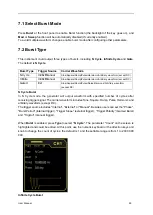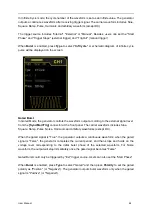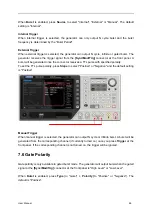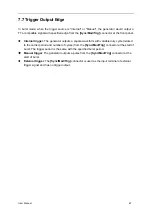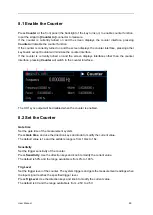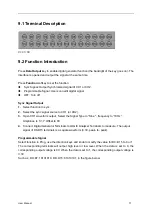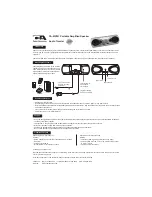
User Manual 75
10.2 Impedance
The impedance setting is applicable to output amplitude and DC offset voltage. HDG2000B has a
50Ω fixed serial output impedance for the
[1]
connector at the front panel. If the actual load does
not match the specified value, the voltage level displayed would not match the voltage level of the
component under test. To ensure correct voltage level, the load impedance setting must match
the actual load.
Press
Utility
->
CH1Set
->
Imped
to select "HighZ" or "50Ω". The default is "HighZ". The
impedance setting will be displayed on the screen. As shown in the figure below, the impedance
of CH1 is set to a specified value "50 Ω" and the impedance of CH2 is set to "HighZ".
The generator will adjust the output amplitude and offset voltage automatically once the
impedance setting is changed. For example, the current amplitude is 5Vpp. At this point, change
the output impedance from 50Ω to HighZ and the amplitude displayed on the screen will double to
10Vpp. If the
output impedance is changed from HighZ to 50Ω, the amplitude will reduce to half of
the previous value (2.5Vpp). Note: Only the displayed values change with the parameter and the
real output from the generator does not change.
10.3 Store and Recall
HDG2000B allows users to store the current instrument state in the internal or external memory
and recall them when needed.
10.3.1 Storage System Overview
HDG2000B provides an internal memory (home Disk) and an external memory (USB Disk).
Home Disk: Users can store the instrument states to the home disk in .pho format.
USB Disk: available when a USB storage device is detected at the USB Host interface at the front
panel. Users can store the state files to the USB disk in .pho format, and recall the state files and
the arbitrary waveform files from the USB disk.
State storage includes the waveform, frequency, amplitude, DC offset, duty cycle, symmetry and
phase as well as the modulation, sweep and burst parameters of the two channels and the
counter parameters.
Press
Store
at the front panel to enable the Store/Recall function and open the Store/Recall
interface as shown in the figure below.



